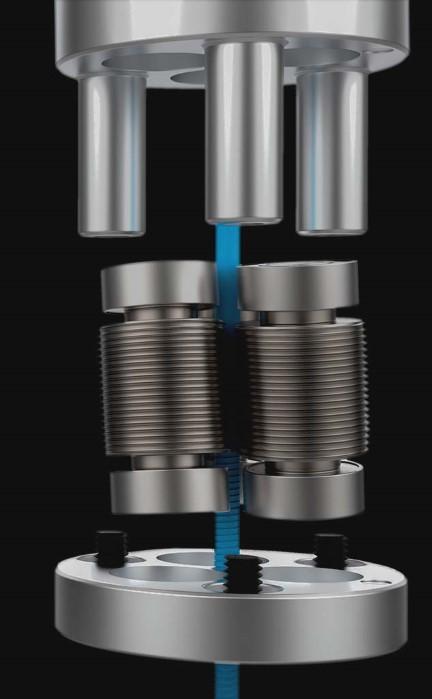- FMA
- The Fabricator
- FABTECH
- Canadian Metalworking
Our Publications
Categories
- Additive Manufacturing
- Aluminum Welding
- Arc Welding
- Assembly and Joining
- Automation and Robotics
- Bending and Forming
- Consumables
- Cutting and Weld Prep
- Electric Vehicles
- En Español
- Finishing
- Hydroforming
- Laser Cutting
- Laser Welding
- Machining
- Manufacturing Software
- Materials Handling
- Metals/Materials
- Oxyfuel Cutting
- Plasma Cutting
- Power Tools
- Punching and Other Holemaking
- Roll Forming
- Safety
- Sawing
- Shearing
- Shop Management
- Testing and Measuring
- Tube and Pipe Fabrication
- Tube and Pipe Production
- Waterjet Cutting
Industry Directory
Webcasts
Podcasts
FAB 40
Advertise
Subscribe
Account Login
Search
3D printer increases engagement between filament and extruder, minimizing under-extrusion
- January 13, 2022
- Product Release
- Additive Manufacturing
FuseLab’s FL300M FFF (fused filament fabrication)-style printer incorporates the company’s rotary extruder technology, which reportedly helps prevent under-extrusion of material—a common source of part failure with other printers.
The extruders on conventional FFF printers feed filament into the melt zone with one or two drive gears, resulting in one or two points of contact between the drive system and filament. At higher speeds or extrusion forces, this can lead to slippage and subsequent under-extrusion.
The rotary extruder comes with three drive rollers, each of which provides multiple points of contact. This design element significantly increases engagement between the drive mechanism and filament, improving the extrusion process.
The manufacturer says the technology proves especially beneficial when 3D-printing parts with metal-powder filaments. They are more fragile, due to their high metal-powder and low binder content, and the distributed contact of the rotary extruder lowers the risk of filament failure.
The FL300M features independent dual extruders; a print volume of 300 by 300 by 280 mm; nozzle diameters of 0.2, 0.4, 0.6, and 0.8 mm; layer height from 0.05 to 1.00 mm; multimaterial capabilities; a heated, enclosed build plate (up to 110 degrees C); and an enclosed filament chamber.
- Podcasting
- Podcast:
- The Fabricator Podcast
- Published:
- 04/16/2024
- Running Time:
- 63:29
In this episode of The Fabricator Podcast, Caleb Chamberlain, co-founder and CEO of OSH Cut, discusses his company’s...
- Trending Articles
- Industry Events
16th Annual Safety Conference
- April 30 - May 1, 2024
- Elgin,
Pipe and Tube Conference
- May 21 - 22, 2024
- Omaha, NE
World-Class Roll Forming Workshop
- June 5 - 6, 2024
- Louisville, KY
Advanced Laser Application Workshop
- June 25 - 27, 2024
- Novi, MI


























